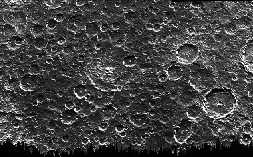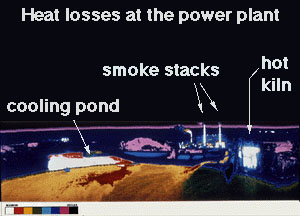Exploratour - The Surface of Europa
The cratered surface of Jupiter's moon, and Europa's neighbor, Callisto.
Click on image for full size
NASA
Click on image for full size
NASA
With each new picture, the lack of craters suggested that the age of Europa's surface was younger and younger. First scientists thought it was 3 billions years old, then they guessed it was only 1 million years old, then 10,000 years old, and finally they guessed that it might be currently active!
This is page 4 of 20












